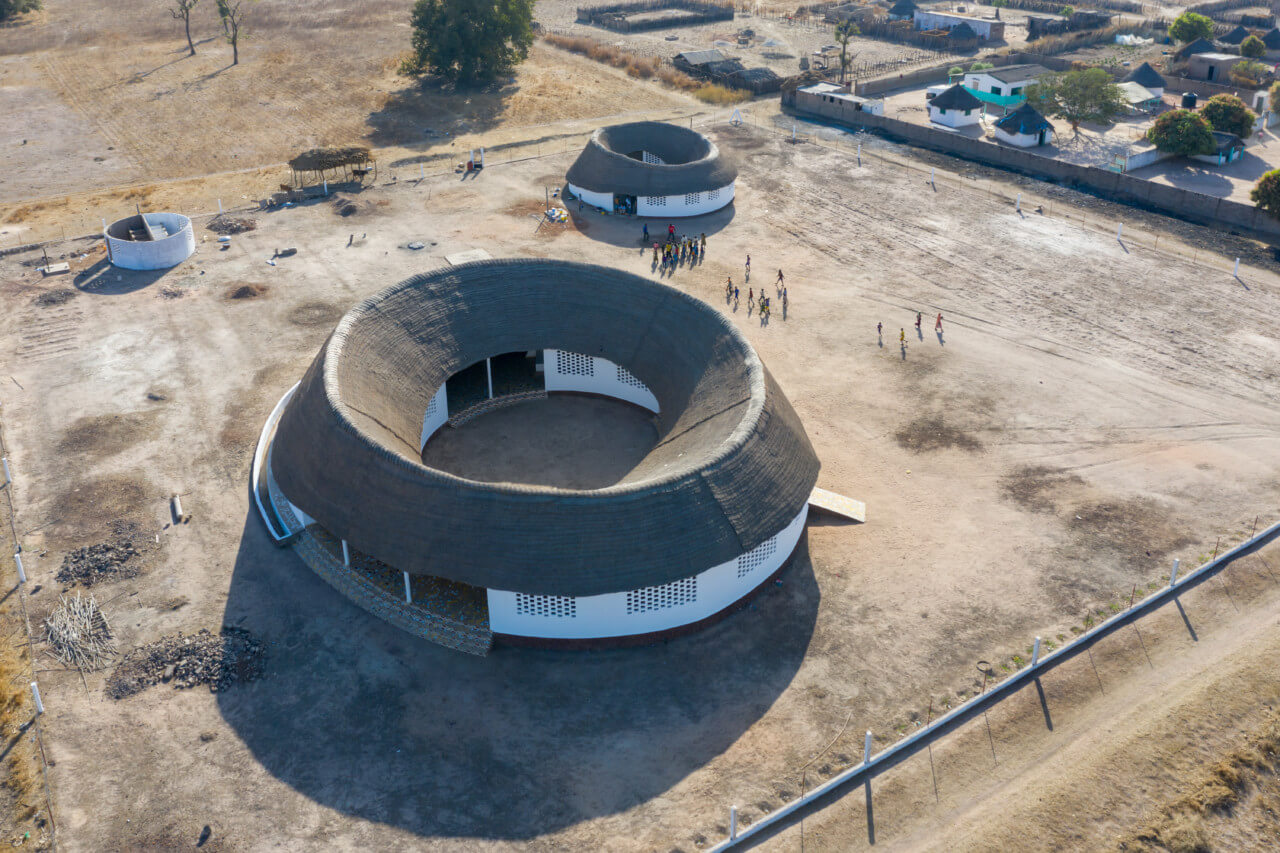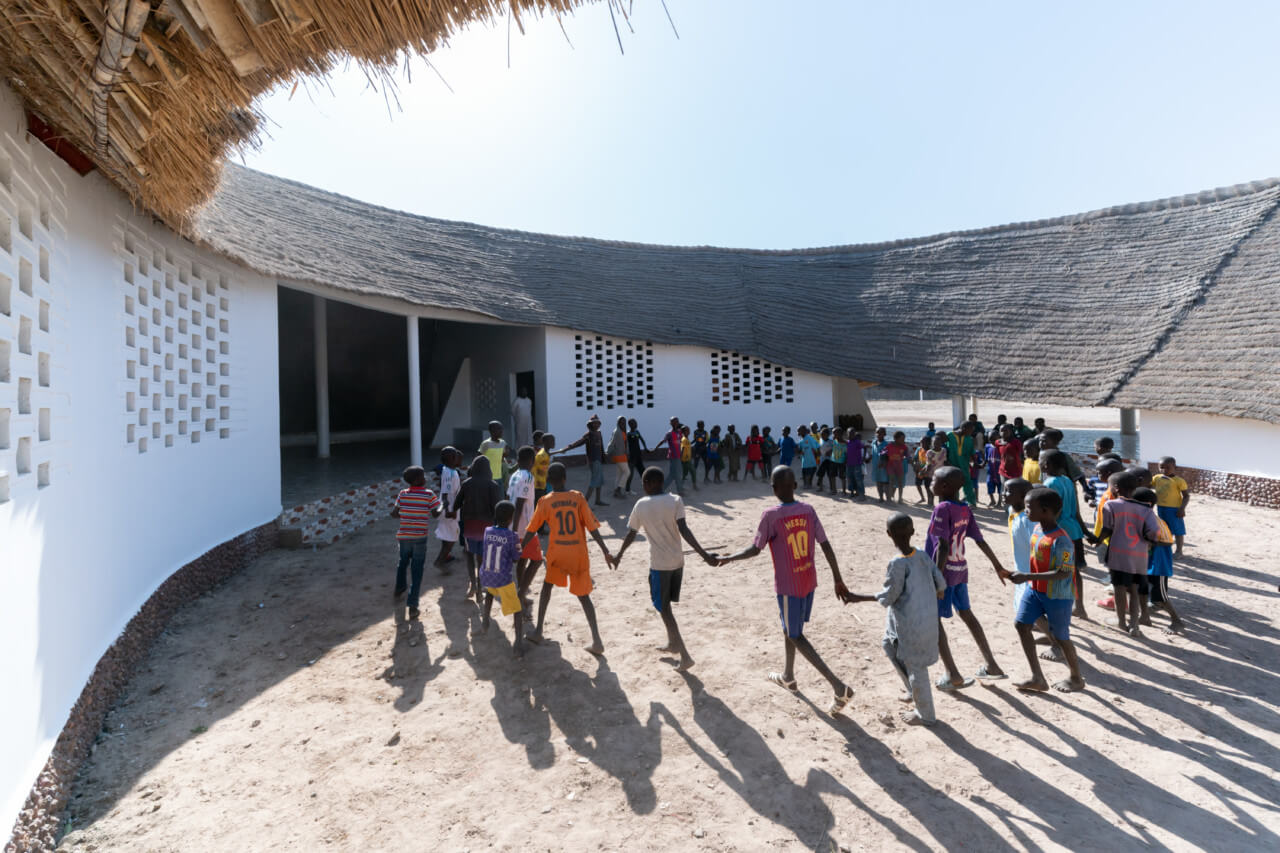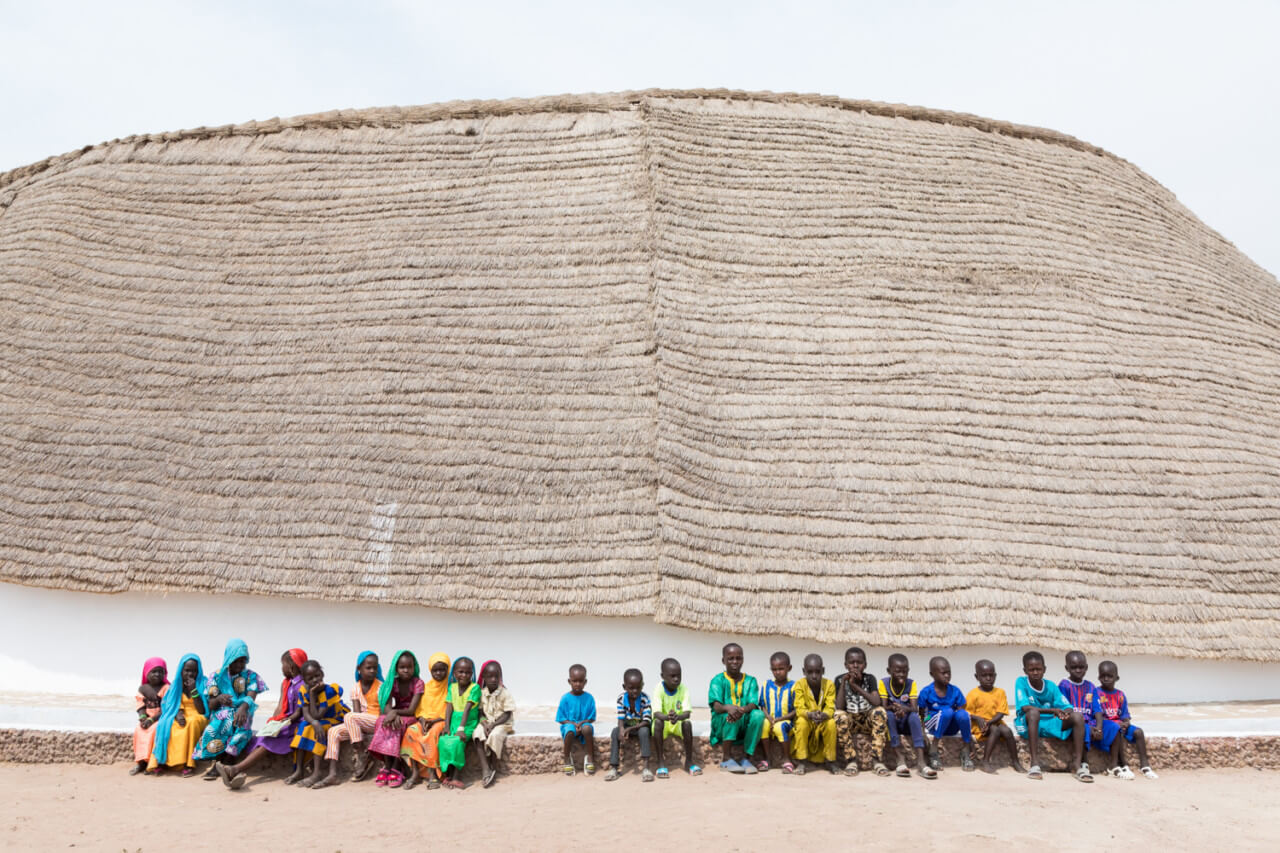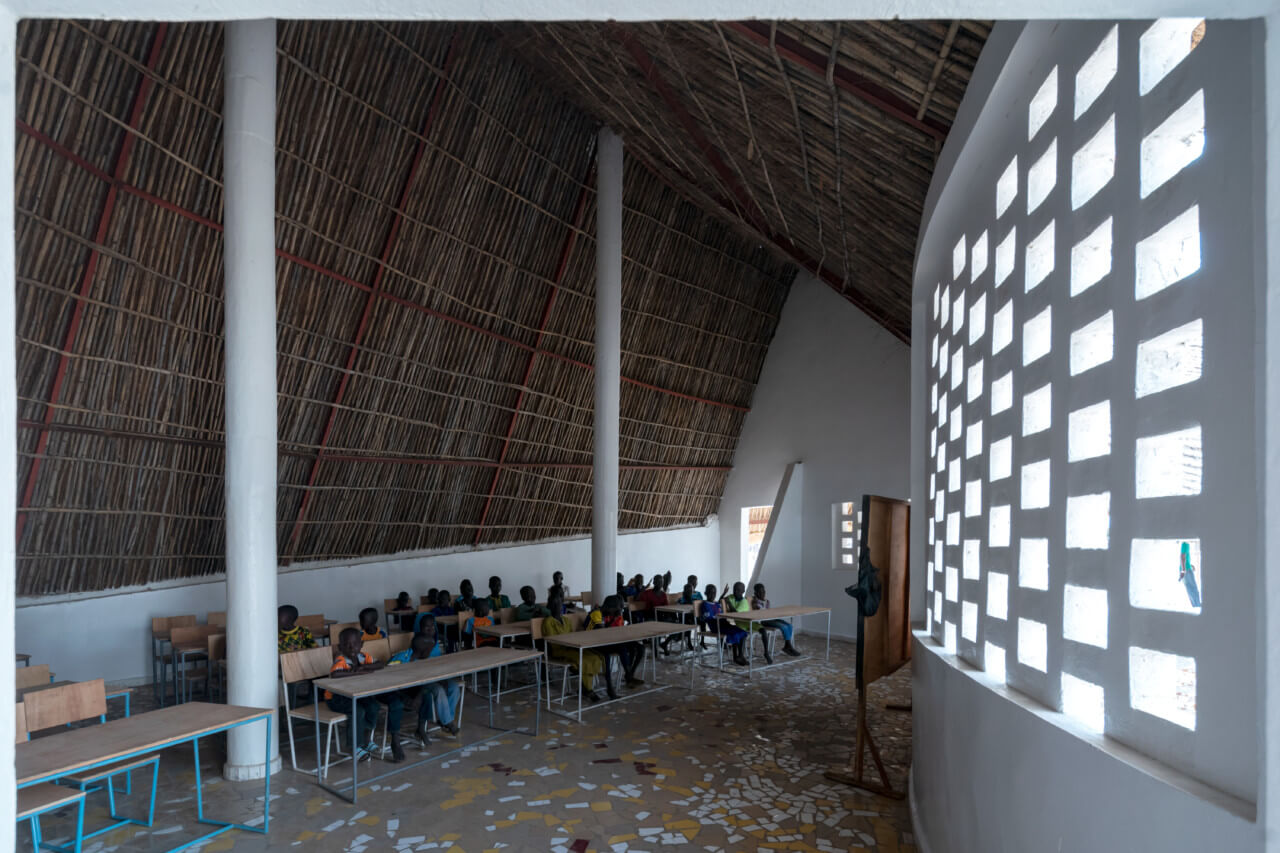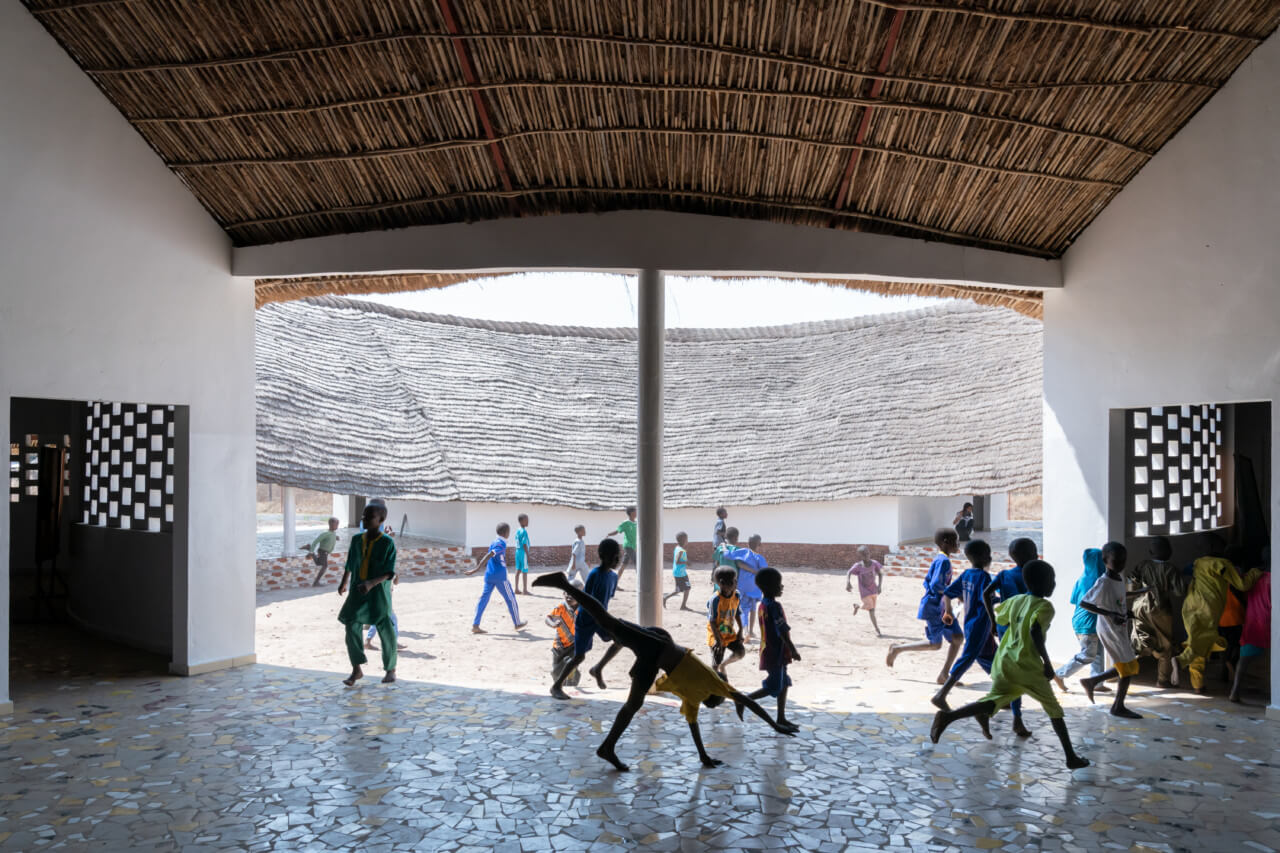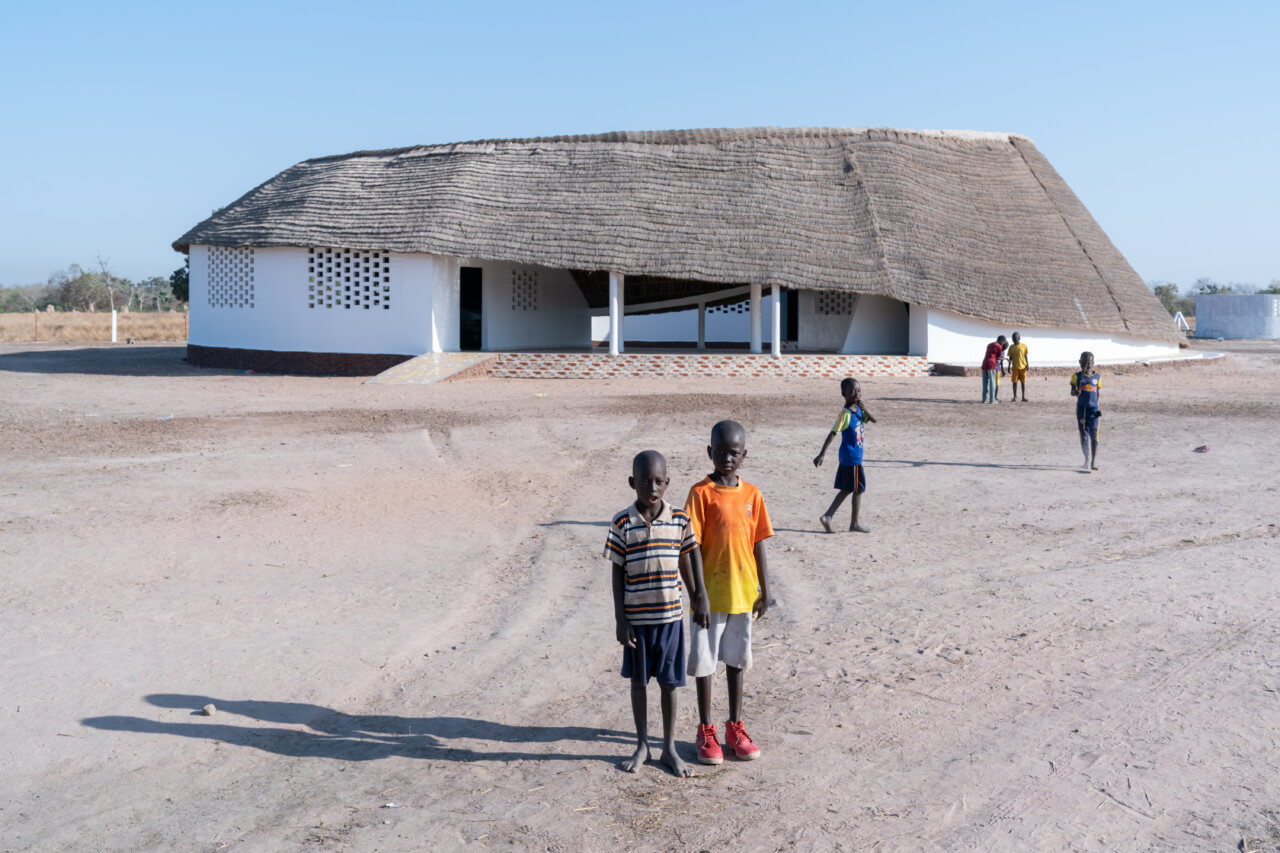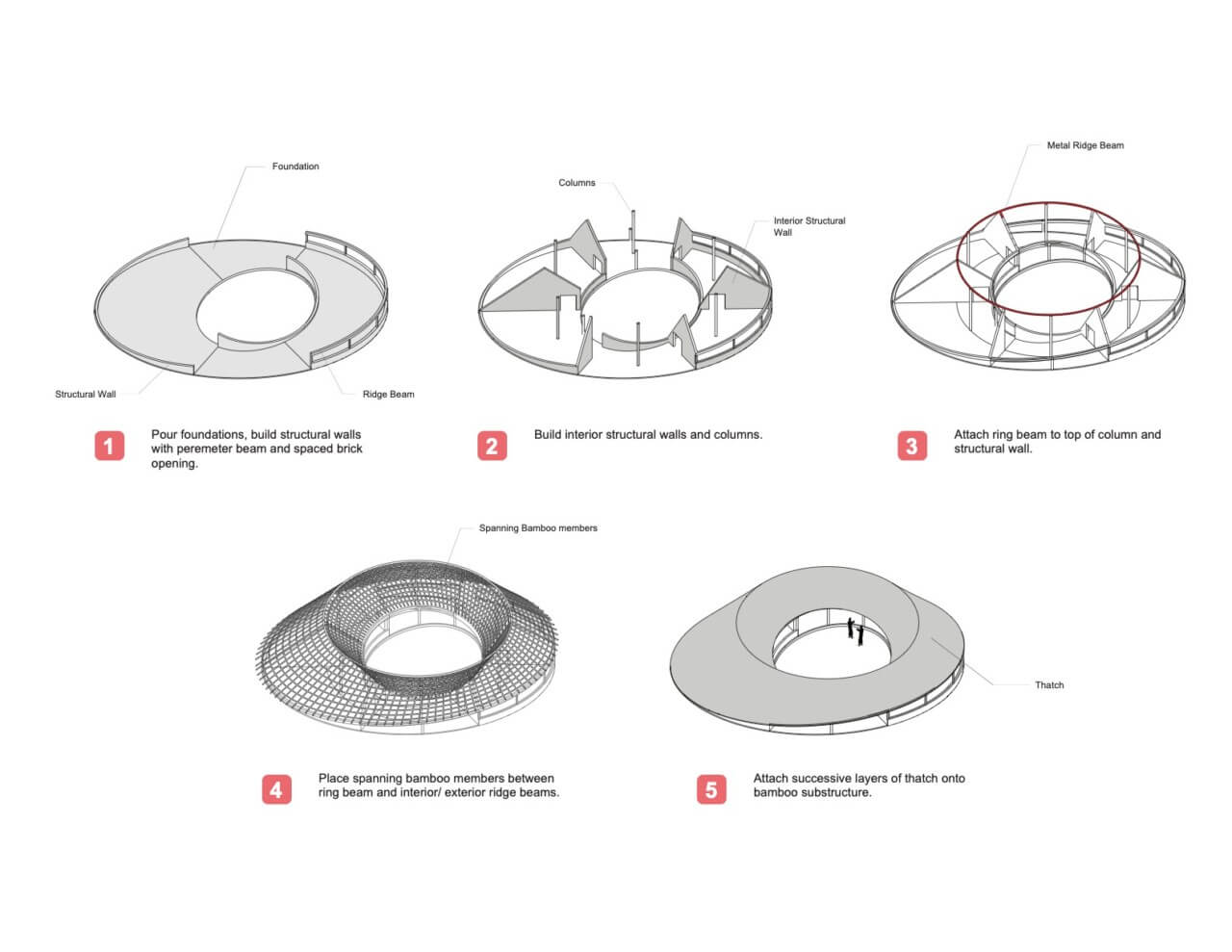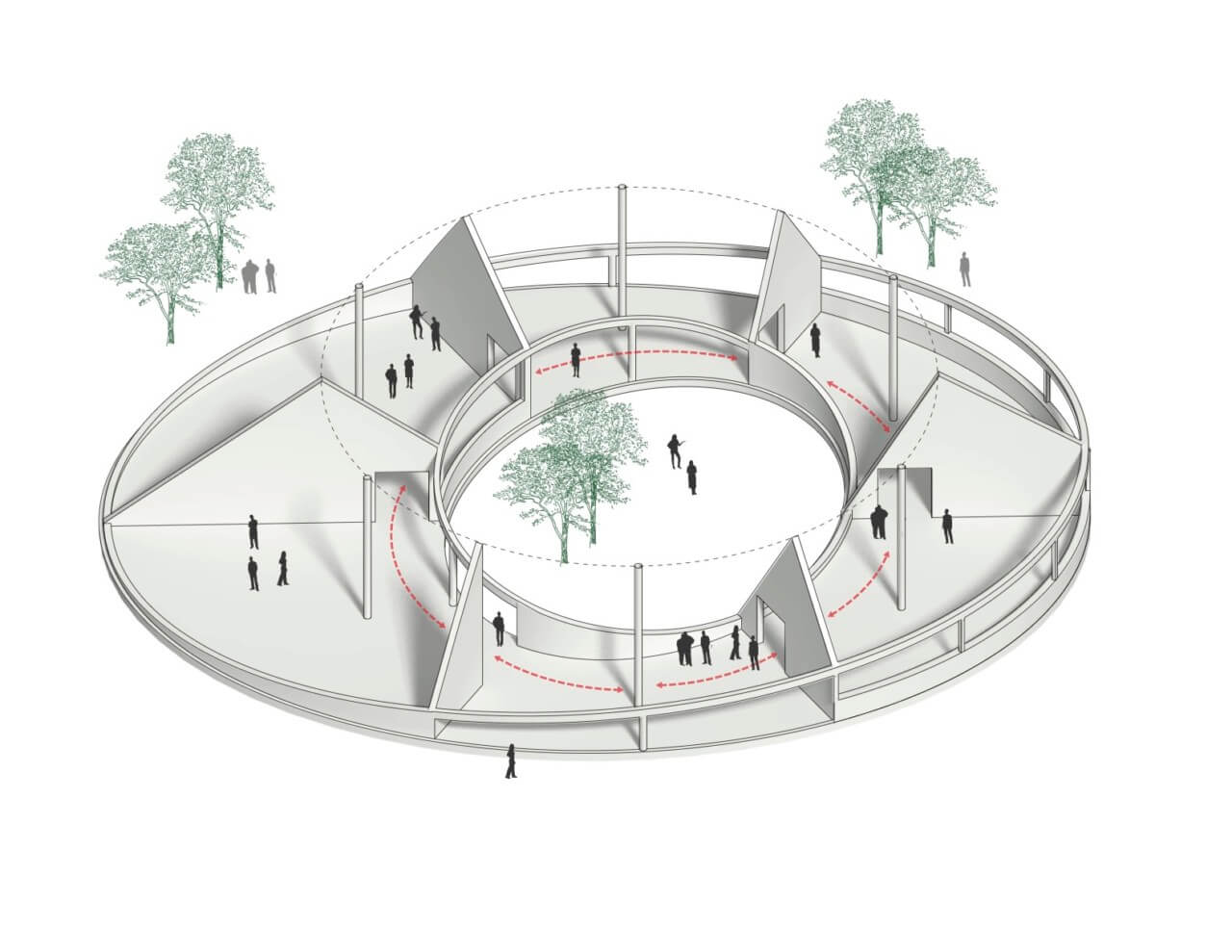Awarded the 2021 AIA Award for Architecture in late April, the Senegalese Fass School and Teacher’s Residences is the first in its region of over 110 villages to provide secular education alongside traditional Quranic teaching. The project, completed in 2019, was designed by Toshiko Mori Architect (TMA) for the Josef and Anni Albers Foundation and nonprofit group Le Korsa. The oval-shaped main building with a generous courtyard can facilitate up to 300 students, while the surrounding two smaller structures contain teacher residences and a washroom. Four classrooms and two flexible spaces encircle the courtyard to allow for efficient circulation that mirrors the vernacular residential typology of the Senegalese region of Ziguinchor and Casamance. While deeply informed by these ancient impluvium family houses, the school also drew inspiration for its roof and precise geometry from the “one-room schoolhouse” of rural Germany where Albers taught.
- Manufacturer
Local craftsmen
- Architect
Toshiko Mori Architect - Structural Engineering Consultant
Schlaich Bergermann Partner - General Contractor
Dr. Magueye Ba - Location
Fass, Senegal - Date
2019
- System
Compressed mud bricks, bamboo, and thatch - Products
Local earth for mud bricks
Local thatch
An inversion of the traditional pitched roof, the sloping crown is comprised of local reed thatch that greatly improves the climactic control of the extreme heat in this region. A “stack effect” forces hot air into the peak of the roof while mediating colder air into the classroom space below. This passive cooling strategy keeps the interior 20 degrees cooler than its exterior environment. A hidden metal ridge beam with a bamboo substructure supports the roof. Additionally, the thatched roof is pitched at a 45-degree angle, covering most of the brick facade, in order to maximize rainwater runoff and direct it to an existing aquifer.
“We looked to the thatch roofs of the aforementioned impluvium houses as an improvement on the local government-mandated school typology, which uses corrugated metal roofs,” said Toshiko Mori, founder and principal of TMA. “These echo the sound of flash flood rains during the rainy season, which can make school lessons unable to be heard. Additionally, the metal roof transmits extreme heat during the summer months, making the classroom unusable.”
“In contrast, thatch, a locally available material, dulls the sound of flash flood rains and insulates against heat during the hot summer months.”
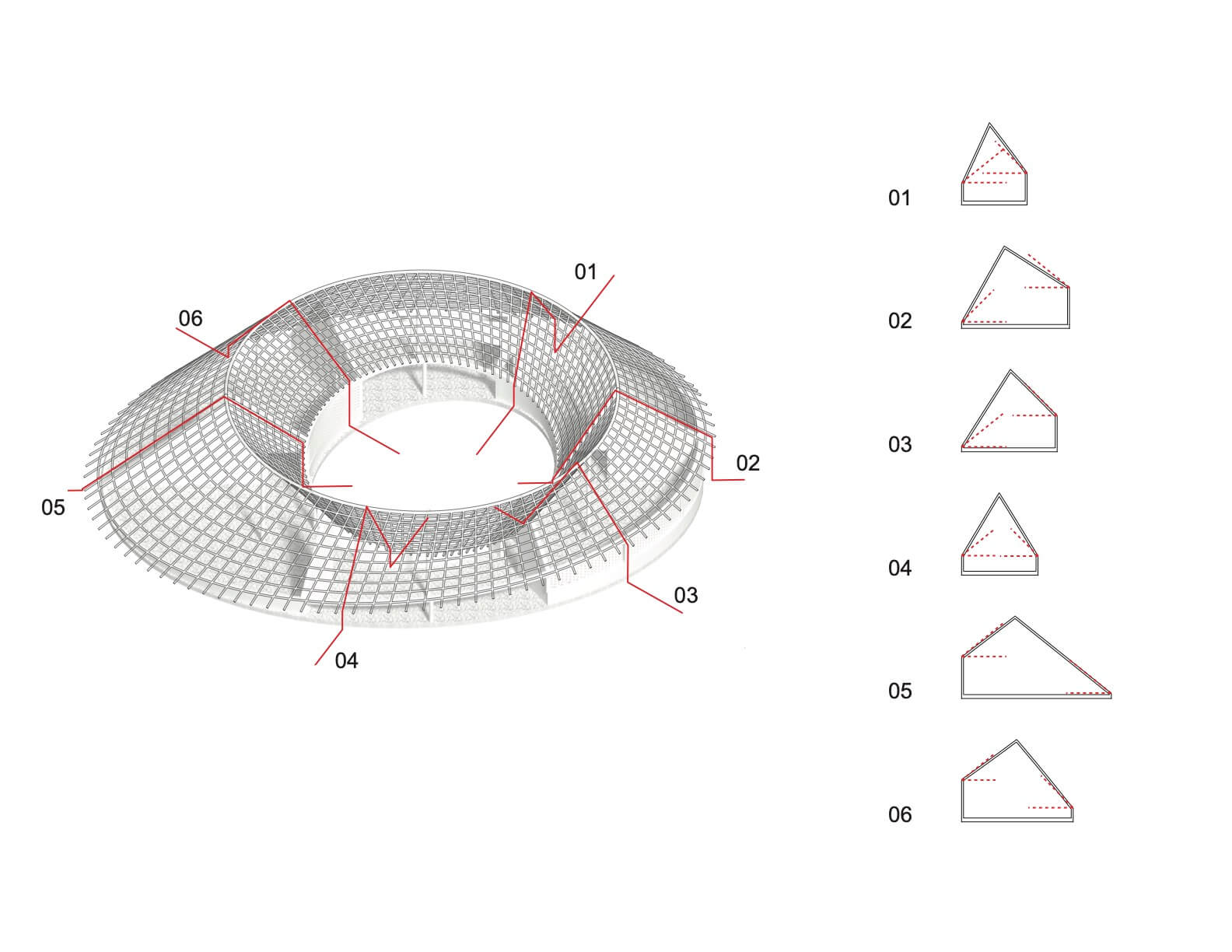
A local team of artisans and craftspeople led by Dr. Magueye Ba utilized traditional skills and local earth to construct the structure and facade. Compressed mud bricks that make up the walls and envelope were painted white to deflect heat. Perforated patterns across the courtyard and exterior can be found in strategic places to direct airflow and ventilation in the direction of the prevailing wind, critical given the building’s lack of on-site electrical infrastructure. Furthermore, TMA directly provided diagrams on assembly and precise geometry for local use. By giving the building’s inhabitants the knowledge necessary to repair and modify the building as needs arise, the community of Fass can take complete ownership of the structure.
German architect Manuel Herz has also recently completed the Maternity and Pediatric Hospital in the neighboring community of Tambacounda, Senegal, for Le Korsa.






